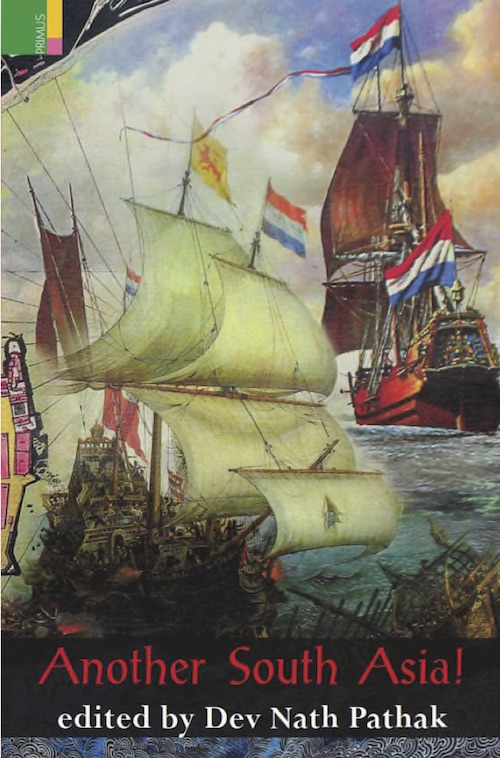Culture Is Political & Politics Is Cultural In ‘Another South Asia’

Culture is Political & Politics is Cultural in ‘Another South Asia’;Another South Asia! Pathak, Dev Nath. 2017. Delhi: Primus Books.
 It was at my grandfather’s house where as a child I came to know about Krishna. Krishna was a hunched, short fair middle-aged man who worked in the neighbour’s estate. Most of the time Krishna and I interacted and he shared fruits with me. My grandfather told me about how Krishna came from India to Sri Lanka due to the oppression he encountered. This is one of the earliest memories I have of crossing the boundaries of South Asia. Then, of course there were stories about the LTTE (full form?) leaders crossing borders of India and Sri Lanka in the dead of night. The stories informed us that these border crossing Tigers would go to watch a Tamil movie and have dinner in India and return to Sri Lanka by the next morning. These stories might not be entirely true. As a student of social anthropology I am not interested in digging out the ‘truth’ content. Truth is in the meanings that emerge from not so true stories., The regional connections are marked in these stories. Much later, after many years, I watched SAARC games as an enthusiastic South Asian teenager. And as the destiny would have it, I ended up studying at South Asian University located in the dusty Delhi in politically volatile India. It is not such a long journey of my idea and experience of South Asia. It entails the early stage equipped with exotic, colourful and exciting images, later accompanied by tedious and mechanical bureaucracy and administration, and very recently the addition of cynicism- South Asia means everything bad. I think this may be true of many of us, our memories and stories, today. In this wake, the book Another South Asia unearths hidden and forgotten histories and shared experiences in the region.
It was at my grandfather’s house where as a child I came to know about Krishna. Krishna was a hunched, short fair middle-aged man who worked in the neighbour’s estate. Most of the time Krishna and I interacted and he shared fruits with me. My grandfather told me about how Krishna came from India to Sri Lanka due to the oppression he encountered. This is one of the earliest memories I have of crossing the boundaries of South Asia. Then, of course there were stories about the LTTE (full form?) leaders crossing borders of India and Sri Lanka in the dead of night. The stories informed us that these border crossing Tigers would go to watch a Tamil movie and have dinner in India and return to Sri Lanka by the next morning. These stories might not be entirely true. As a student of social anthropology I am not interested in digging out the ‘truth’ content. Truth is in the meanings that emerge from not so true stories., The regional connections are marked in these stories. Much later, after many years, I watched SAARC games as an enthusiastic South Asian teenager. And as the destiny would have it, I ended up studying at South Asian University located in the dusty Delhi in politically volatile India. It is not such a long journey of my idea and experience of South Asia. It entails the early stage equipped with exotic, colourful and exciting images, later accompanied by tedious and mechanical bureaucracy and administration, and very recently the addition of cynicism- South Asia means everything bad. I think this may be true of many of us, our memories and stories, today. In this wake, the book Another South Asia unearths hidden and forgotten histories and shared experiences in the region.
The book took me on a journey, which was partially new to me and unraveled a world beyond the boundaries of South Asia. What is South Asia and what is ‘Another South Asia?’ The word ‘South Asia’ came into being after the Second World War. In the wake of the establishment of area studies in the United States, the ‘Asian continent’ as a space of study came into being. After the Second World War, it was found that there is not much knowledge about the region to deal with it’s economic, political and social issues. During the period of the 1940s – 1970’s, American State Department identified the region as South Asia. However, the word does not emerge within the region but imposed by various administrative bodies’ exogenesis to the region. The strong administrative boundaries created within the region have been naturalized creating a ‘modern myth’ through textbooks, legal documents, etc. The borders and boundaries along the nation-states render the region lifeless bunch of territories. The official idea of South Asia does not see that people share their grand mythologies, civilization, cultures, and languages. They also share the political ills and social evils, not only heroes and virtues. These boundaries are sites of interactions with wanderers, devotees, travelers and others. The making of the region as an administrative entity has de-historicized the region. The scholars who are blinded by the boundaries of nation-states limit their studies and intellectual imagination to the nation-states. The effort of the book Another South Asia problematizes these administrative boundaries, cartographic borders, and bureaucratic impediments. While editor of the book outlines the rationale to depart from the disciplinary limitations, Sasanka Perera argues in this essay that ‘a more dynamic sense of regionalism and regional consciousness must necessarily emanate from sources exterior to SAARC such as artists, writers, scholars and ordinary citizens’ (page 261). In the other significant essays we take note of the examples of poetic, literature, theater and practices of Sufis. The book brings together scholars from diverse background and conjures an idea of fluid region.

